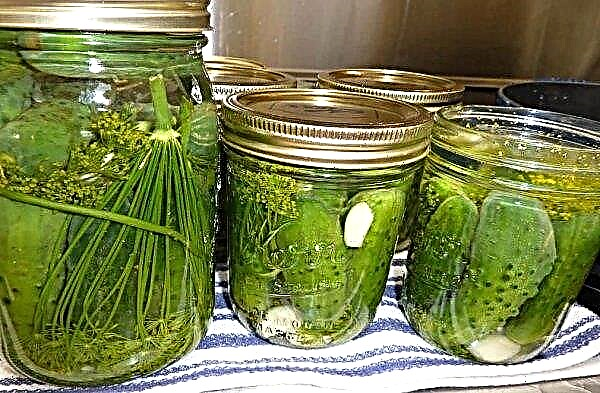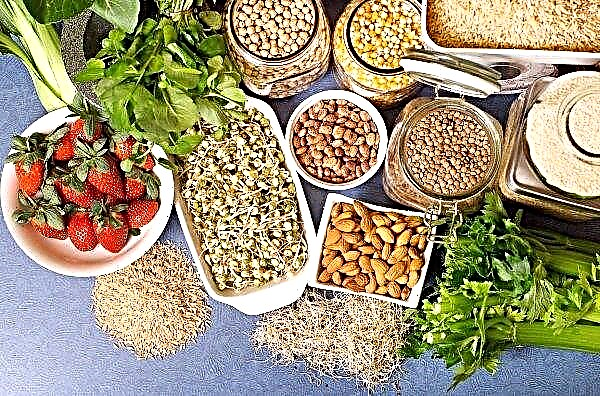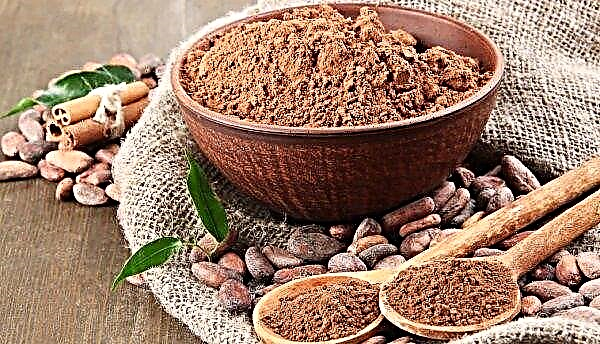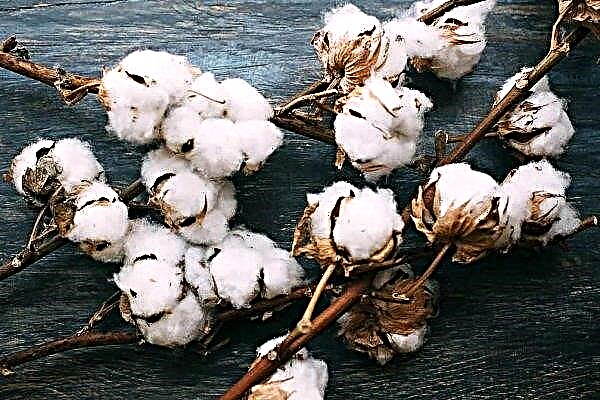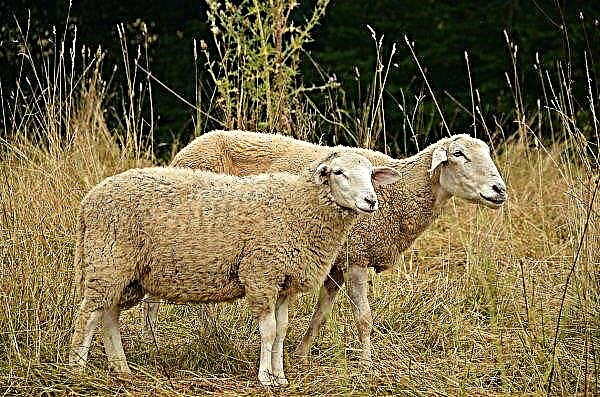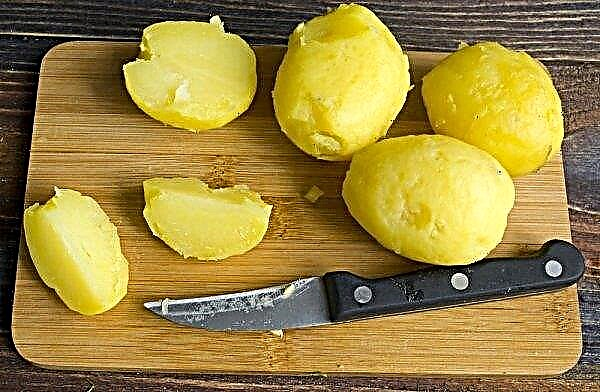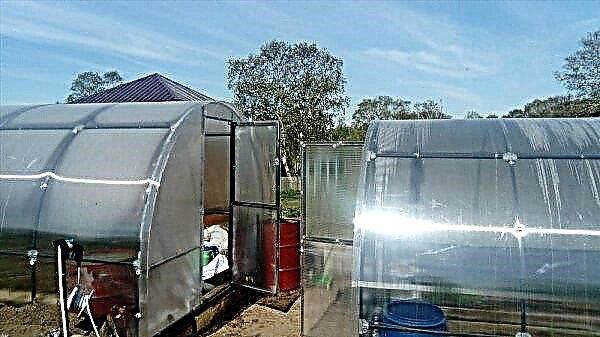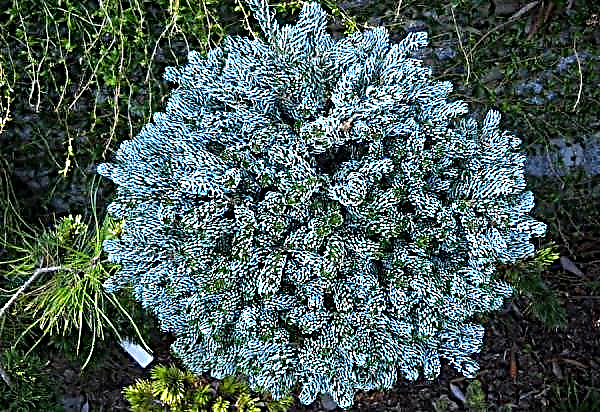Yesterday, neat leaves were decorated with cucumber whips, and today they hang like wrinkled rags. This may be a sign of improper agricultural technology or the first symptom of a serious illness. This article will reveal the main causes of withering of cucumber leaves, ways to eliminate these problems and methods for their prevention.
Why do fade leaves on cucumbers: the main reasons
Leaves wither on cucumbers planted both in open ground and in a greenhouse. It can be both young bushes, and those that are already bearing fruit. From the hanging leaves, you can understand that the plant is missing something. It is advisable to immediately determine what it is suffering from and try to eliminate the cause. A slow grower can lose the entire crop.
Wrong watering
The most common mistake of inexperienced gardeners is improper watering. This may include:
- Lack of moisture. Cucumbers often like to drink water and immediately respond to untimely hydration. If the soil dries, the leaves become very soft and turn yellow.
- An excess of moisture, which is more dangerous than a lack. If the soil does not dry out, and water stagnates in the roots, favorable conditions are created for the development of fungal diseases, for example, root rot.
- Watering with cold water also provokes infection with root rot. With this disease, the roots cease to function and supply water and nutrients along the stem to the leaves. Without timely intervention, the bushes wither and die.
Did you know? The thorns on young cucumbers have a special purpose - the removal of excess fluid.
Nutrient deficiency
In order for the cucumber bushes to grow and develop well, they need to be fed with the necessary minerals in a timely manner. Nitrogen is responsible for building green mass, and potassium and phosphorus are responsible for flowering and fruiting. If the first substance in the soil is not enough, and the second, on the contrary, is too much, then the inflorescences and fruits are formed quite abundantly, but the bush looks very poor in appearance. Leaf plates become pale, soft, dry, and new leaves grow weakly.
Wrong landing place
If you plant seedlings in the wrong place in the spring, then in the summer, cucumbers can suffer because of this.
The place may not be suitable for 2 reasons:
- Plants are long under the scorching sun. Cucumbers are sun-loving, but prolonged sunshine leads to excessive evaporation of moisture from a green surface. To reduce the evaporation area, the leaves are curled into a tube.
- Seedlings grow in the shade and suffer from a lack of sunlight. The reason for the shading can be a close bed, densely planted with cucumbers. Bushes, growing up, create a shadow for each other. Because of this, some leaves and whole lashes do not receive enough light and nutrients. As a result, they wither and dry.
Did you know? The first greenhouse cucumbers were grown in winter and summer for the Roman emperor Tiberius, who consumed them all year round.
Infections or pests
Quickly wither leaves on lashes affected by diseases (most often fungal) or pests. Fungal infections and insects act very rapidly: in just a few days the whole plant can die.
Common diseases of cucumbers:
The main "lovers" of cucumber tops are:
Exposure to chemicals
Cucumbers are very sensitive to chemicals, especially herbicides. If the beautiful green leaves suddenly wilted and hang lifelessly from the lashes, then, perhaps, they got particles of the herbicide. The same reaction in a plant can be with the chemical agents that processed the adjacent beds.
Important! Especially carefully inspect for the presence of fungal diseases need greenhouse cucumbers. Due to the increased humidity in greenhouses and greenhouses, very favorable conditions are created for the development of infection.
Wrong choice of "neighbors"
Cucumbers are not “reconciled” with all plants growing in the neighborhood. Especially they do not like to grow near tomatoes. More precisely, the conditions necessary for the normal growth of tomatoes are simply not suitable for cucumber seedlings. In order for tomatoes to grow healthy and not to get late blight, in a greenhouse you need to reduce the humidity of the air and soil. If cucumbers are planted nearby, the lashes with leaves will fade from lack of moisture.
What to do and how to process cucumbers
Having determined the cause of the withering of cucumber foliage, you must immediately act to heal the plants and protect them from more serious consequences.
How to deal with this:
- If there is a lack of moisture, the bushes should be abundantly watered, after which the leaves should again grow stronger and tone up. It is important to establish frequent watering (every other day), but not very plentiful. Water should be used only warm (warmed up in the sun) and settled.
- With excessive moisture, stop watering for several days. Resume watering only after the earth is completely dry.
- If cucumbers have not been fertilized for a long time, it is necessary to feed them with fertilizer containing nitrogen. These plants take organic matter better than chemical recharge. To enrich the soil with nitrogen, you can use urea, a yeast solution and wood ash.
- Cucumber bushes suffering from the abundance of sunlight, you need to try to pritenit something. For this, various improvised tools are suitable: sheets of cardboard, bags, tree branches or special covering material.
- Thicken landing should be thinned out: tear off dry leaves, prune whips and root out whole bushes that others shade.
- If chemical preparations (herbicides) have got on leaf plates, you need to buy the plant in a large amount of water, to flush chemicals off him.
- When infected with fungal diseases, you must first remove diseased leaves, whips or whole bushes. Then treat with special biological agents, such as Trichodermin, Planriz, Fitosporin. With a neglected condition, Topsin-M, Previkur chemical preparations are more effective. You can spray a sick plant with a medicinal mixture of Metronidazole and Streptomycin (1: 1), dissolved in 5 l of water.
- Insect control measures - folk methods (soap solution, infusion of onion peel or garlic), special biological insecticides (Fitoverm, Strela, Aktofit) and chemicals (Spark, Intavir, Kinmix).
Important! In small greenhouses and hotbeds, it is advisable to grow only one crop (cucumbers or tomatoes), since they have a different need for humidity. When co-grown in a small space, the crop is likely to be lost.
How to keep pickled cucumbers from wilting
There are several ways to keep pickled cucumbers fresh for as long as possible:
- In the refrigerator: 20 days at a temperature of + 1 ... + 2 ° C, 15 days at + 4 ... + 8 ° C, 7 days at + 15 ° C. Storage packaging: a plastic bag that is not completely filled, but tightly closed, a plastic container (preferably vacuum), as well as wrapping each cucumber in white paper or cling film.

- In a glass jar (in vacuum). In a sterilized glass jar, place the washed and dried fruits tightly. To create a vacuum, a small candle is used, which must be set on fire right in the bank. After 5 minutes of burning the wick, the container must be closed with a lid. The candle will go out when there is no oxygen left inside. In such a vacuum dish and in a cold place, vegetables can be stored until the end of winter.

- In egg white which should be applied to each vegetable, previously cleaned and wiped dry. Dry protein turns into a film, which serves as a sealed vacuum wrap. In such individual packaging, the fruits are kept fresh for 1-2 months.
To prevent wilting of cucumber leaves, such preventive measures will help:
- To adhere to the correct crop rotation: do not plant cucumbers in the same place. It is better to plant them after suitable predecessors: tomatoes, eggplant, potatoes, onions, legumes, spinach, white cabbage (early), cauliflower, beets, carrots, greens.
- Choose a place that is not shaded and at the same time not in direct sunlight.
- Planting seeds or seedlings should be carried out according to the scheme 50 × 50 cm.
- Seeds and soil are treated with potassium permanganate solution for the prevention of diseases and against insects.
- After planting, mulch the beds to preserve moisture in the soil, protect against weeds and warm the roots.
- Water the bushes with warm water every 2 days, and daily in hot summers.
- Spray with insecticides for prevention.
- Timely feed plants with nitrogen-phosphorus-potash mineral fertilizers or organics.
 By taking such steps, you can protect the cucumbers from wilting leaves, not only during the growing season, but also during ripening. Cucumbers are favorite vegetables that are everywhere present on the table in fresh or canned form. But when growing these capricious plants in your own area, you should adhere to certain rules in order to successfully collect a good crop.
By taking such steps, you can protect the cucumbers from wilting leaves, not only during the growing season, but also during ripening. Cucumbers are favorite vegetables that are everywhere present on the table in fresh or canned form. But when growing these capricious plants in your own area, you should adhere to certain rules in order to successfully collect a good crop.



